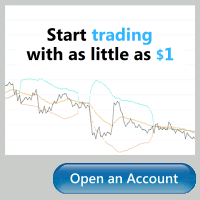Steps to Becoming a Profitable Trader
| 1. Understand what is means to be a trader. Most importantly, there are no rules to being a trader. There is no one to praise you for doing well, no one to keep you on track and make sure you are doing what you are supposed to be doing. Your ultimate success or failure is in your hands alone. This is almost exclusive to trading. A person who owns their own business needs customers and must keep them happy in order to succeed. This is not the case with trading. If you fail, you have no one to blame but yourself. However, if you do succeed, nearly unlimited wealth is at your disposal. This single item should give anyone considering trading for a living serious pause. 1a. Know Thy Self. I consider this to probably THE most important item in the list.You must match your trading methodolgy and style to something that fits your personality. If your nearly have a heart attack watching the price bars tick up and down, consider a longer term style that does not require you to be in front of the screen each and every moment your trade is open. Start with the daily or even weekly charts. If you can’t stand the though of your hard earned capital thrashing around in the open market, a shorter term style may be more your cup of tea. Are you an anxious person? Do you become stressed easily? Do you have patience and iron-clad discipline? These are the question that you need to be asking yourself before you even look at your first chart or pick up you first book on technical or fundemental analysis. Be honest with yourself, because you cannot hide your true self from the markets, and if you are fighting yourself, you will never be able to focus enough energy on battling the markets. 2. Get your mind right. Pick up a few books on the psychological challenges of trading for living. I highly recommend Mark Douglas’ books, “Trading in The Zone” and “The Discliplined Trader”. Dr. Alexander Elders’ books, “Trading for a Living” and “Come into my Trading Room” I also found helpful. Traders face very unique psychological challenges and understanding these before you get too deep into technical or fundamental analysis is of the utmost importance. 3. Learn the basics of technical analysis. This is my own opinion and other may not agree. However, it is my opinion that even if you intend to make all your trading decisions based on fundamental data, a basic understanding of the technicals can only help you. If you intent to base your decisions on technical analysis, spend more time reading and learning about the vast universe of technical indicators and terminology. Look at example charts, learn about how the indicators are calculated. What is this indicator telling me and why is it more useful that price alone? How do other use this indicator? 4. Paper or demo trade. If you plan on trading forex, nearly every broker will give you a trial with a demo account on which you can trade real prices with virtual money. I recommend OANDA, but try as many as you can and find what works for you. This is a huge advantage and you must use it to your full advantage. Watch how the price moves in real time. watch the indicators that you have learned about. Apply some of the skills that you have learned so far. Practice, practice, practice. You have absolutely no risk here, play around to your hearts content and get comfortable in front of a trading terminal. There are many free trading systems available on the internet. Try some out in real time. My own personal opinion is that you not spend too much time on a demo account. get comfortable with the charts and entering and exiting trades. Trade a system for 20 trades in a row, trade another. Find out what works for you, what you like and what you don’t like. Then move on to step 5. 5. Learn to the art of money management. A good technical analyst does not necessarily make a good trader. Again, this is specific to forex, but the technique applies to any market. Open an account with OANDA. You can open an account with as little as $500 dollars, and you can trade as little as a single unit of EUR/USD for example. This means buying a single Euro and selling a single US Dollar. Try your systems again. Make each tick worth 0.01, or 0.05 or 0.10. This may seem similar to trading a demo account. but the knowledge that you are risk actual money will trigger different pathways in your brain and trigger different stress reaction that trading completely virtual money. 6. Develop a trading plan. Write down your entry rules, your exit rules, you money management rules. Print it out or write it by hand. Stick it above your monitor, and follow the rules. You may decide to change your system or change your rules. If you do, print out the new rules and follow them without fail. You cannot change your rules in the middle of trade. You must be two people. You must be a planner, and an executor. The planner cannot execute traders, and the executor cannot change the plan. 7. Execute your trading plan. Over and over and over and over and over. Track your performance. Identify areas that need improvement. Rinse and repeat. Find and talk to other trades. Share ideas and ask questions. Go Back to The Forex |




Comments on "Steps to Becoming a Profitable Trader"
post a comment